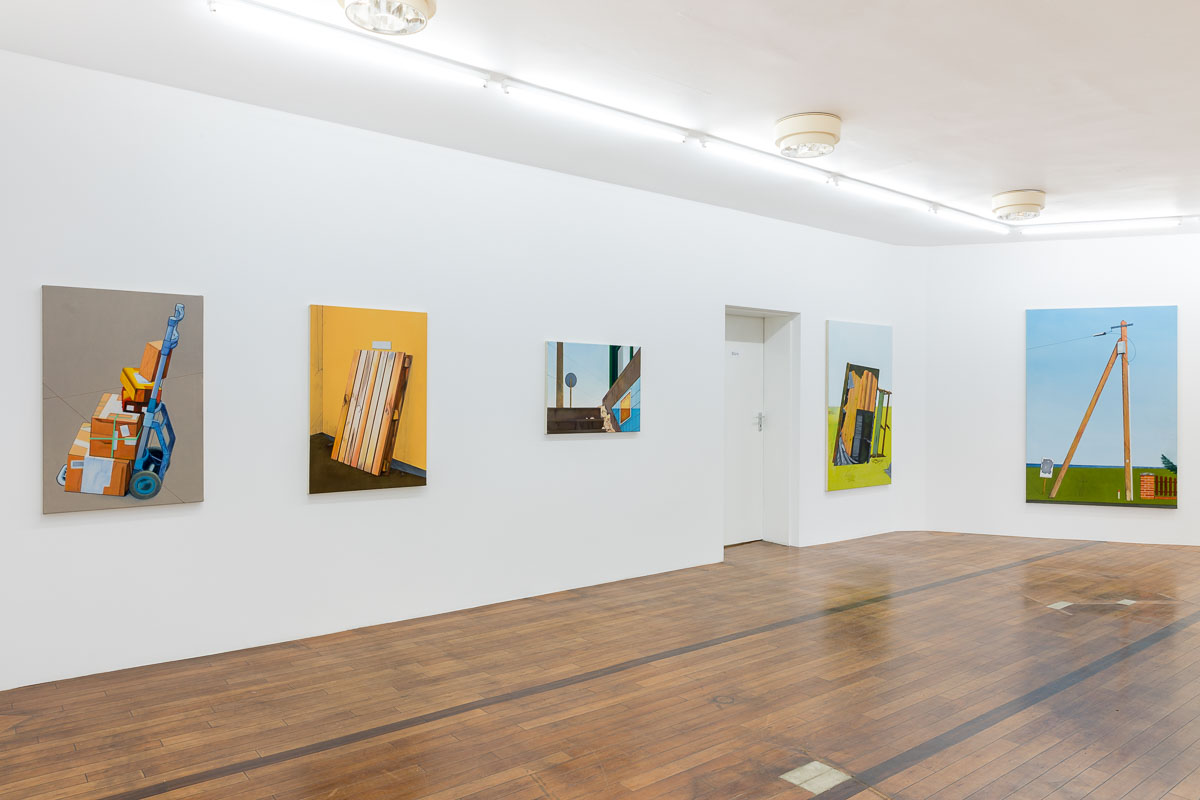Thoralf Knobloch / Stichprobe
23.06.2018 — 14.07.2018

We are pleased to present new paintings by Thoralf Knobloch in his sixth solo exhibition at the Galerie Gebr. Lehmann with the exhibition "Stichprobe"(*).
His new works relate their motifs to two different places. On the one hand, there are the neo-romantic sea views with their quiet, possibly magical atmosphere. Next to it are paintings with little Berlin stories - found in the daily monotony of the big city.
Thoralf Knobloch is a distinctive painter with a work that at first glance can be described as realistic painting. With his view of the quiet side scenes of our urban and rural environment, he collects his motifs which are later developed into paintings.
His works could be described as silent observations of a currently timeless state. Its peculiarity is the atmosphere, an idyllic atmosphere that reminds one of the late works of Stanley Spencer or Edwin Dickinson. One finds in the pictures something like a visual time bubble in which the representations (the things) appear to be suspended in themselves. (Sometimes it seems as if we have missed an event that has just happened before our arrival in these strangely distant sceneries.) The subtle atmosphere resonates in thoughtful, complex layers - to put it poetically -; it is rich in looseness, detailed elements and the for Knobloch special lively abstraction.
Knobloch's paintings do not represent the real world as in a mirror effect, but contain truth or authenticity that can only arise from the process of painting. Any photographic reproduction, on the other hand, would be cool and mechanical. In contrast, Thoralf Knobloch skilfully created a space for his own artistic technique: Objects painted are in the realm of abstract simplification, geometric details, overlapping compositions, complexity and shifts in perspective have become Knobloch's peculiarity.
(*) Sample: An arbitrary or deliberate selection of a subset of a defined total. Each sample is characterized by two central characteristics: the type of selection (e.g. conscious, random, location, group) and the scope of selection (quantity).
Samples are used in various areas: Research, medicine, society, statistics, in the family ("schoolwork done?") and in an artist's studio...
His new works relate their motifs to two different places. On the one hand, there are the neo-romantic sea views with their quiet, possibly magical atmosphere. Next to it are paintings with little Berlin stories - found in the daily monotony of the big city.
Thoralf Knobloch is a distinctive painter with a work that at first glance can be described as realistic painting. With his view of the quiet side scenes of our urban and rural environment, he collects his motifs which are later developed into paintings.
His works could be described as silent observations of a currently timeless state. Its peculiarity is the atmosphere, an idyllic atmosphere that reminds one of the late works of Stanley Spencer or Edwin Dickinson. One finds in the pictures something like a visual time bubble in which the representations (the things) appear to be suspended in themselves. (Sometimes it seems as if we have missed an event that has just happened before our arrival in these strangely distant sceneries.) The subtle atmosphere resonates in thoughtful, complex layers - to put it poetically -; it is rich in looseness, detailed elements and the for Knobloch special lively abstraction.
Knobloch's paintings do not represent the real world as in a mirror effect, but contain truth or authenticity that can only arise from the process of painting. Any photographic reproduction, on the other hand, would be cool and mechanical. In contrast, Thoralf Knobloch skilfully created a space for his own artistic technique: Objects painted are in the realm of abstract simplification, geometric details, overlapping compositions, complexity and shifts in perspective have become Knobloch's peculiarity.
(*) Sample: An arbitrary or deliberate selection of a subset of a defined total. Each sample is characterized by two central characteristics: the type of selection (e.g. conscious, random, location, group) and the scope of selection (quantity).
Samples are used in various areas: Research, medicine, society, statistics, in the family ("schoolwork done?") and in an artist's studio...
Kontakt
Opening Hours
Mi - Fr 11:00 - 18:00 / Sa 12:00 - 16:00